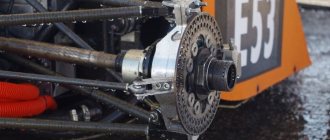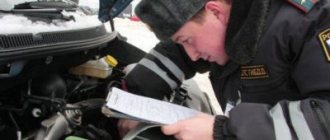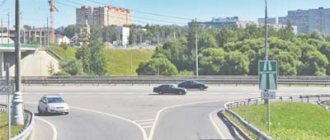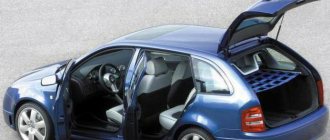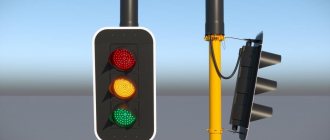The idea of opening a car technical inspection station is relevant both for small towns with a population of 50 thousand or more, and for megacities - such a business will be in demand almost everywhere.
If before 2011, when carrying out technical inspections at the traffic police, vehicles were subject to extremely stringent requirements for complete serviceability, now there is always, as they say, the opportunity to “agree.” However, such “inspections” are carried out at your own peril and risk, and if fraud is detected, the owner of the maintenance point risks losing not only his business, but also paying a considerable fine. Brief business analysis: Costs of organizing a business: 500,000-2,000,000 Relevant for cities with a population: from 150,000 people Situation in the industry: the supply market is saturated Difficulty of organizing a business: 3/5 Payback: 2-4 years
So, you’ve wondered how to open a car technical inspection station, you’ve already read the article on how to write a business plan, written a step-by-step guide for your business (or ordered it on the website), but don’t know what to do next? First of all, get ready for a long and tedious collection of all the necessary documents - this is the most difficult stage of organizing a business.
What should be the inspection points?
Any car insurance policy, be it MTPL, CASCO, Technical Assistance or another, requires reliable information about the technical condition of the vehicle. Since 2012, this function has been transferred to technical inspection (TO) operators. This made the service station an attractive business segment, especially for auto repair shop owners who already had a significant technical base and premises.
Many people became interested in the idea of opening such a point. But before opening a technical inspection point, you should familiarize yourself with the RSA requirements for this business and calculate the profitability of the enterprise.
It is important to think about how, in conditions of market relations and competition, to make it attractive to car owners, who are the main consumers of service points. Based on the requirements of the Union of Motor Insurers, a technical inspection point can only be stationary and equipped with technical equipment to the required extent, again, regulated by RSA.
An accredited maintenance operator must have an address, which precludes in advance the possibility of obtaining a vehicle diagnostic card at mobile inspection points. Despite the apparent convenience of providing mobile maintenance services, it is illegal. Therefore, it is impossible to obtain a RSA certificate for a mobile inspection station.
How to get a license?
In order for a maintenance station to operate and generate income, it is necessary to obtain a license to carry out this type of activity. You can obtain accreditation through the Russian Union of Auto Insurers. It is here that the Department for Organization of Maintenance and Accreditation was created. What is needed for this?
The founder of the station must provide documents that confirm the presence in his property or on other legal grounds (for example, rent) of a building or structure that will be used to carry out the necessary work, as well as equipment.- The maintenance station must have at least one expert in the field of vehicle maintenance on staff.
- In addition, it will be necessary to confirm the technical capabilities that allow timely transmission of information to the relevant authorities.
In order to obtain a license from the RSA, you must send an application with the specified list of documents. After their consideration, a decision will be made.
How to open a service point
The requirements for those wishing to carry out vehicle maintenance are quite simple.
To open a technical inspection point, you must:
- have the status of a legal entity or individual entrepreneur;
- register with the Unified State Register of Legal Entities and the tax office;
- have OKVED code 71.20.5 – Maintenance of motor vehicles.
Only those who have received accreditation from the RSA (Russian Union of Motor Insurers) have the right to conduct vehicle maintenance to conclude an agreement with an insurance company.
Key points for opening a service station
The entire process of obtaining a maintenance permit consists of four stages:
- legal;
- technical;
- financial;
- organizational.
Each stage involves performing certain actions.
Legal training includes:
- opening an LLC or individual entrepreneur;
- passing the accreditation of the maintenance point.
The technical component includes:
- choosing a location and premises appropriate to the type of activity;
- technical equipment of the point according to the order of the Ministry of Industry and Trade (latest version for May 2021).
The financial side involves the development of a business plan for the project. This will allow you to determine the size of the investment and compare it with the expected revenue.
The estimated payback period is calculated based on the expected profit.
Organizational matters:
- staffing the maintenance station with qualified personnel and forming a personnel reserve;
- training and advanced training of existing specialists;
- conducting extensive advertising of the company to attract customers.
Registration of activities
To become a technical inspection operator, you must register an enterprise according to the following scheme:
- decide on the form of ownership - optimally LLC or individual entrepreneur;
- provide the tax service with a prepared package of documents;
- pay the state fee;
- determine the most advantageous form of taxation;
- obtain the required OKVED;
- register with the territorially relevant medical and pension insurance organization;
- obtain a RSA certificate, mandatory for all maintenance operators.
Premises requirements
Until 2012, the Requirements for the production and technical base were in force, which specified the mandatory conditions applicable to the territory.
Among the requirements were:
- availability of sites for bench testing of brake systems;
- availability of access roads;
- parking area for disabled vehicles.
Although in the Law on Technical Inspection Federal Law No. 170 (of 2012) the requirements for the premises are reduced to the presence of a building owned or leased that has an address and is registered in the manner prescribed by law, there are three criteria that the technical inspection point must meet.
The room should be:
- through for travel;
- equipped with the necessary communications;
- equipped with CCTV cameras to monitor vehicle maintenance.
Requirements for the technical equipment of a service point
If the requirements for the premises in which maintenance will be carried out are minimal, then the technical equipment of such a point must necessarily comply with Order of the Ministry of Industry and Trade No. 1677 dated December 6, 2011, taking into account changes dated May 25, 2021.
The document regulates:
- technical means for diagnosing the condition of the vehicle;
- measurement parameters;
- measurement range;
- permissible error;
- the use of alternative equipment or the use of this stand for a specific category of transport.
To carry out maintenance, it is enough to have only the equipment that corresponds to the scope of accreditation. On average, its purchase will cost at least 350 thousand rubles, and the upper limit can reach up to a million.
Requirements for employees
In addition to the premises and equipment, the maintenance station must have at least one technical expert on staff.
To accredit an entrepreneur as a maintenance operator, the expert must meet certain requirements of the RSA.
He must have:
- specialized education;
- work experience in the specialty;
- driver's license with categories including the scope of accreditation.
Requirements for the technical base of the inspection point have been developed
The Ministry of Transport has developed requirements for the production and technical base of a technical inspection operator.
The document will establish new requirements for the sites of technical inspection points from June 8, 2021, namely, minimum requirements for the size of the room, the size of the inspection pit, lifts and gates for the passage of vehicles. The requirements for technical diagnostic tools and equipment and their technical characteristics are also listed. Judging by the number of regulatory documents issued for 2021 - 2021, the state is paying significant attention to this area and from June 8, car owners will have to change their approach to the process of obtaining a diagnostic card.
Name: On approval of the requirements for the production and technical base of a technical inspection operator and the list of documents in the field of standardization, compliance with the requirements of which by persons applying for an accreditation certificate of a technical inspection operator and by technical inspection operators ensures their compliance with accreditation requirements
Project ID: 02/08/12-19/00098540
Developer: Ministry of Transport of Russia
Types of economic activity: Transport
Key words: technical inspection, diagnostic card; technical condition monitoring
Text of the draft regulatory legal acts:
On approval of requirements for the production and technical base of a technical inspection operator
and a list of documents in the field of standardization, compliance with the requirements of which by persons applying for an accreditation certificate for a technical inspection operator and by technical inspection operators ensures their compliance with accreditation requirements
In accordance with paragraph 9 of Article 8 of the Federal Law of July 1, 2011 No. 170-FZ “On technical inspection of vehicles and on amendments to certain legislative acts of the Russian Federation” (Collected Legislation of the Russian Federation, 2011, No. 27, Art. 3881 ; 2021, No. 18, Art. 2212) order:
1.Approve:
Requirements for the production and technical base of the technical inspection operator in accordance with Appendix No. 1 to this order;
a list of documents in the field of standardization, compliance with the requirements of which by persons applying for an accreditation certificate for a technical inspection operator and by technical inspection operators ensures their compliance with the accreditation requirements in accordance with Appendix No. 2 to this order.
2. This order comes into force on June 8, 2021.
REQUIREMENTS for the production and technical base of a technical inspection operator
I. General provisions
1. Requirements for the production and technical base of a technical inspection operator include requirements for the totality of buildings, premises or structures and diagnostic lines belonging to the technical inspection operator and intended for technical inspection, located at the address entered in the state address register in accordance with Federal Law dated 28.12 .2013 No. 443-FZ “On the federal information address system and on amendments to the Federal Law “On the general principles of the organization of local self-government in the Russian Federation”. (hereinafter referred to as the Requirements).
2. The requirements are mandatory for compliance by persons applying for a certificate of accreditation of a technical inspection operator, and by technical inspection operators.
II. Requirements for buildings, premises and structures of a technical inspection point
3. The minimum internal dimensions of production premises in which diagnostic lines for technical inspection of vehicles of various categories are located are given in Table 1.
Table 1
Minimum internal dimensions of production premises in which diagnostic lines for technical inspection of vehicles of various categories are located.
Notes.
1 Height is measured from the floor of the room to the lowest point of the load-bearing ceiling structures or the ceiling in the rooms where the diagnostic lines are located;
2 when using an inspection ditch along the entire length;
3 when using the lift at its location.
4. The minimum dimensions of entry and exit gates for industrial premises in which diagnostic lines for technical inspection of vehicles of various categories are located are given in Table 2.
table 2
Minimum dimensions of entry and exit gates for industrial premises that house diagnostic lines for technical inspection of vehicles of various categories
5. The production premises must be equipped with diagnostic lines for checking vehicles at work stations, which are sections of the production area intended for placing and carrying out technical diagnostics of a vehicle in accordance with the standard list of technological operations for carrying out technical diagnostics of various categories of vehicles and (or ) types of urban ground electric transport or its components, approved in accordance with paragraph 9 of Article 8 and part 4 of Article 11.1 of the Federal Law of the Russian Federation of July 1, 2011 No. 170-FZ “On technical inspection of vehicles and on amendments to certain legislative acts of the Russian Federation".
6. Requirements for lifts for lifting under the wheels of vehicles are given in the appendix to these Requirements. The minimum dimensions of inspection ditches for diagnostic lines for technical inspection of vehicles of various categories are given in Table 3.
Table 3
7. A divider with a height of at least 0.1 m must be provided at the entrance to the inspection ditch.
8. Along the inspection ditch, guide (safety) reinforced concrete or metal flanges with a height of at least 50 mm are installed along the entire length of the ditch. The flanges must have breaks along the length for power roller brake stands, stands (testers) with movable platforms for testing the steering drive.
9. Signal markings must be placed on the dividers, flanges, wheel guards and along the edge of the ditch along the outer side of the flanges.
10. The platform for checking the brake systems of vehicles in road conditions should be used to check the brake systems of vehicles of urban land electric transport, or if there is a power roller stand at the technical inspection point or on a mobile diagnostic line for checking the brake systems of vehicles specified in paragraphs 5.1.1.5 and 5.1.1.6 GOST 33997-2016 “Interstate standard. Wheeled vehicles. Operating safety requirements and testing methods,” and auxiliary braking systems.
The site for testing vehicle brake systems in road conditions must meet the following requirements:
1) the length of the platform must ensure acceleration and braking with a spare brake system of all categories of vehicles for inspection of which the technical inspection operator is accredited, and its width must be at least 4.0 m for vehicles of categories M1, N1 and L and at least 4, 5 m for vehicles of other categories with the necessary reserve for safe braking in the event of loss of lateral stability (skidding) of the vehicle. To check the brake systems of vehicles of categories M1, N1 and L under road conditions, the length of the platform must be at least 80 m, and for vehicles of categories M2, M3, N2 and N3 and road trains - at least 140 m;
2) the longitudinal slope of the site should not exceed 1%;
3) the site must have a cement or asphalt concrete road surface;
4) the road surface of the site must be marked with a longitudinal center line and lines parallel to it, spaced from the center line to the left and right by 0.8 m and 1.0 or 1.2 m, depending on the track of the vehicles being checked;
5) the road surface before entrances and exits to the site must be marked with dividing lines to indicate the direction of movement.
11. When the technical inspection operator uses the method of rolling down a slope of standard size to check the parking brake system of vehicles, one or more overpasses with an inclined supporting surface must be constructed in the production premises or outside it. The inclination of the overpass intended for testing the parking brake system of vehicles tested with a maximum permissible weight must be 16 ± 1%; for vehicles of categories M1-M3 in running condition – 23 ± 1%, and categories N1-N3 in running condition – 31 ± 1%.
12. The tram depot or trolleybus depot, at the location of which technical inspection is carried out, must provide all the necessary production and organizational conditions for technical diagnostics of vehicles in accordance with the Rules for technical inspection of urban ground electric transport vehicles, approved by Decree of the Government of the Russian Federation dated 30 December 2011 No. 1240.
III. Requirements for diagnostic lines
13. Diagnostic lines must be equipped with technical diagnostic tools and equipment, including photo recording tools, as well as software.
Technical diagnostic tools, garage and auxiliary equipment placed on diagnostic lines, including mobile ones, must ensure technical diagnostics of vehicles in accordance with GOST 33997-2016 “Interstate Standard. Wheeled vehicles. Operational safety requirements and verification methods”, Rules for technical inspection of vehicles, approved by Decree of the Government of the Russian Federation of December 5, 2011 No. 1008, Rules for technical inspection of urban ground electric transport vehicles and these Requirements. The list and main technical characteristics of technical diagnostic tools and equipment used by the technical inspection operator in accordance with the scope of accreditation of the technical inspection point and mobile diagnostic line are given in the appendix to these Requirements.
14. Measuring instruments used for technical diagnostics must be metrologically verified in accordance with the provisions of Federal Law No. 102-FZ of June 26, 2008 “On ensuring the uniformity of measurements.”
15. Means of photographic recording of a vehicle undergoing technical inspection must form a photographic image of the vehicle with characteristics in accordance with the requirements for photographic images, approved in accordance with the requirements of paragraph 9 of Article 8 of the Federal Law of July 1, 2011 No. 170-FZ “On Technical inspection of vehicles and amendments to certain legislative acts of the Russian Federation.”
VII. Requirements for mobile diagnostic lines
16. The mobile diagnostic line must be equipped with technical diagnostic tools and equipment necessary to check the categories of vehicles included in the scope of its accreditation, and the relevant requirements given in the appendix to these Requirements.
17. A mobile diagnostic line may be deployed to perform technical inspection of vehicles only in places where overpasses and/or inspection ditches are located for inspecting from below vehicles of those categories for which it is accredited for technical inspection.
18. A mobile diagnostic line, equipped in addition to a power roller stand with a device for checking brake systems in road conditions, may be deployed for technical inspection only in sites that meet the conditions of paragraph 10 of these Requirements.
19. The mobile diagnostic line must be equipped with means for installing and dismantling equipment at the site of the technical inspection and a source of autonomous power supply.
APPLICATION
to Requirements for the production and technical base of a technical inspection operator
LIST OF TECHNICAL DIAGNOSTIC TOOLS AND EQUIPMENT REQUIRED FOR USE WHEN TECHNICAL INSPECTION AND THEIR MAIN CHARACTERISTICS
Notes The symbol "X" means that the requirement applies to a vehicle of the corresponding category. The symbol “-” means that the requirement does not apply to a vehicle of the corresponding category.
1 The error expressed as a percentage is relative, in other units it is absolute.
SCROLL
documents in the field of standardization, compliance with the requirements of which by persons applying for an accreditation certificate for a technical inspection operator and by technical inspection operators ensures their compliance with accreditation requirements
1. GOST 33997-2016 “Interstate standard. Wheeled vehicles. Operating safety requirements and testing methods.”
2. GOST 31489-2012 “Interstate standard. Garage equipment. Safety requirements and control methods."
Requirements for the technical base of a technical inspection point, source: https://regulation.gov.ru/projects#npa=98540
Accreditation issues
To obtain the status of a vehicle technical inspection point, permits are required, the issuance of which, in accordance with the Rules for Accreditation of Maintenance Operators (approved by order of the Ministry of Economic Development), is carried out by RSA. The purpose of accreditation is to determine the applicant's compliance with legal requirements.
To obtain a certificate from the RSA you must provide:
- statement;
- constituent documents;
- extract from the Unified State Register of Legal Entities or Unified State Register of Individual Entrepreneurs;
- confirmation of the availability of premises - documents on ownership or rental of premises;
- documents confirming the ownership or rental of the necessary technical equipment, advising the list for the selected category of transport;
- documents for the provision of communication services for the regular transfer of information to a unified information system (UAISTO), containing information about car owners and their technical inspection;
- confirmation of the presence of a technical expert on staff who meets the established requirements;
- a power of attorney from a legal entity to confirm the competence of the signature of the person who signed the application;
- inventory of attachments;
- payment document confirming payment for accreditation.
The RCA permit is issued to the maintenance operator for a specific area chosen by him - the category of vehicle, which the received certificate gives him the right to inspect.
The category must be selected from the list of vehicles:
- motorcycles (L);
- for the carriage of passengers with less than 8 seats (M1);
- with a number of passenger seats of more than 8 and a weight of less than 5 tons (M2);
- with a number of passenger seats of more than 8 and a weight of more than 5 tons (M3);
- cargo with a carrying capacity of less than 3.5 tons (N1);
- cargo with a carrying capacity from 3.5 to 12 tons (N2);
- cargo with a carrying capacity of more than 12 tons (N3);
- trailers weighing less than 0.75 tons (O1);
- trailers weighing from 0.75 to 3.5 tons (O2);
- trailers weighing from 3.5 to 10 tons (O3);
- trailers weighing over 10 tons (O4).
Documents submitted to the RSA to obtain accreditation of an organization or individual entrepreneur as a maintenance operator are reviewed within no more than 10 days.
If inaccurate data or violations in the established procedure for processing documents are detected, RSA may return the documents to correct errors or refuse to obtain permission.
If the decision of the RSA is positive, all available information about the new maintenance operator is entered into the official register.
New order on technical inspection: has the Ministry of Transport found a way out of a difficult situation?
The Ministry of Transport has published draft amendments to its order establishing requirements for the production and technical base of inspection operators. A major reform of this procedure will start on March 1.
The document specifies the permissible dimensions of the premises of maintenance points. For example, if an operator inspects trucks weighing up to 3.5 tons or buses up to 5 tons (vehicle categories N1 or M2), then if there is an inspection ditch, the permissible building height may be 3.3 m instead of 3.5. The height of the entrance and exit gates is reduced accordingly.
For points inspecting heavy trucks or buses (categories N3 and M3), the minimum width of the room is reduced from 6 to 5.5 m. The permissible depth of the inspection ditch in some cases is reduced from 1.5 m to 1.3–1.1 m. It is clarified that if at the maintenance point it is not possible to use a lift or a ditch, then an overpass can be used.
Another clarification is related to the instruments that should be at the maintenance point - smoke meters, backlash meters, flow meters, devices for measuring light transmission, etc. According to the current version of the order, there should be one device for each diagnostic line (and there may be several of them), The new one clarifies that one device is enough for the entire point.
Formally, technical issues should in fact solve the complex problem that arose on the eve of March 1. From this date, as is known, drivers must undergo a technical inspection procedure at a special service point accredited by the Russian Union of Auto Insurers (RUA). During the procedure, the car will be photographed indicating the coordinates of the technical center.
All information about the technical condition and technical inspection data will be added to the digital diagnostic card and secured with the electronic signature of the specialist who performed the procedure. Insurance companies will have access to the database (EAISTO) to issue an MTPL policy and the Ministry of Internal Affairs to verify the authenticity of the card and the operation of the service center. In case of violation of the procedure, the law provides for large fines and even criminal prosecution.
The new rules provide for the need to have a sufficiently larger amount of equipment at inspection points than is currently available. This, in turn, requires impressive amounts. But RSA conducted a survey (including in Primorye), which showed that in Russia there are 5,300 accredited service points, half of which did not answer the question about their readiness to accept drivers from March 1. Appeals of the same nature were sent to regional authorities, who did not answer questions about the readiness of maintenance stations.
“If the existing inspection operators cannot ensure a quick technical inspection without queues, then citizens will not be able to use their cars to get to work or take a sick child to the hospital, and the production process at enterprises will come to a standstill. Therefore, if a negative development of events is possible, it is necessary to take all measures to avoid this,” the insurers explained.
For MTPL insurers, the insufficiency of maintenance points and the emergence of queues at operators could hypothetically mean destabilization in the “motor insurance” segment, forced interruptions in the conclusion of MTPL contracts, and the appearance of queues of car owners to buy policies. The drivers themselves will be at risk of being banned from driving on the roads without valid MTPL policies or updated diagnostic cards, not through their own fault, but due to the lack of existing maintenance points, limited capacity, and queues.
According to the new requirements of the law on technical inspection, RSA not only accredits maintenance operators, but must, within a year after the law enters into force, carry out on-site inspections of existing maintenance points throughout the country to ensure that operators comply with the new requirements of the law.
Cost of accreditation
The cost of the maintenance operator accreditation service is regulated by Decree of the Government of the Russian Federation No. 912 of November 3, 2011. According to it, payment for each application is made in one payment.
The cost of documents for the right to conduct maintenance is:
- 20 thousand rubles - for reviewing documents and making a decision;
- 10 thousand rubles - for each maintenance item specified in the application.
The RSA certificate is issued for 1 year and must be confirmed annually. This is a paid service.
The fee is:
- 15 thousand rubles - for confirmation of accreditation;
- 10 thousand rubles - for a maintenance point.
When expanding the scope of accreditation, the maintenance operator must pay:
- 15 thousand rubles - for consideration of the application;
- 10 thousand rubles - for each maintenance point.
If an entrepreneur who has a certificate opens another technical inspection point, then in addition to the documents specified in the section on certification, he must submit an application to increase their number and make the appropriate payment.
The payment amount will be:
- 10 thousand rubles - for an application;
- 10 thousand rubles - for each new item.
In the summer of 2011, the function of conducting technical inspections was transferred from the traffic police to private companies. Now anyone can open their own technical inspection and make money from it. The documents required to open a private vehicle inspection are as follows. — constituent documents (copies); — a copy of the passport of an individual entrepreneur; — extract from the Unified State Register of Individual Entrepreneurs or the Unified State Register of Legal Entities; — copies of documents that confirm the ownership of structures (or lease), as well as technical diagnostic tools with approved relevant technical characteristics; — copies of documents that confirm the possibility of transferring information to the UAIS TO; — copies of documents confirming that the organization has at least one technical expert on staff who meets the necessary approved requirements; — a copy of the document that confirms that the person who signed the application has the right to act on behalf of the legal entity; — inventory of attached documents; — a copy of the bank payment order, which confirms payment for accreditation. The owner of a commercial inspection station has the opportunity to choose either one or several areas for accreditation, that is, in which categories of vehicles he has the right to conduct inspections. The vehicle categories are as follows: — motorcycles (L); - vehicles that are used to transport passengers and have no more than eight seats, except for the driver (M1); - vehicles for the transport of passengers with more than eight seats, except for the driver, and a mass of no more than 5 tons (M2); - vehicles for the transport of passengers with more than eight seats, except for the driver, and a weight of over 5 tons (M3); — cargo vehicles weighing no more than 3.5 tons (N1); — freight vehicles weighing over 3.5, but not more than 12 tons (N2); — freight vehicles weighing more than 12 tons (N3). After the RAS receives your application, within 10 working days a decision is made on issuing a certificate or refusing it, which may happen if the applicant submitted inaccurate data or documents were drawn up with deviations from the requirements. If a positive decision is made, all information about the new operator is entered into the official register. According to a special decree of the Government of the Russian Federation on the amount of the fee for accreditation, you will have to pay 20 thousand rubles and, on top of that, 10 thousand rubles for each of the technical inspection points that are indicated in the application. Accreditation must be confirmed annually, which will cost 15 thousand rubles, plus another 10 thousand rubles for each inspection point. If you have chosen some areas of work when starting the company, and then you are going to expand their number, if you have changed the name of the company or the personal data of the owner, then you will have to re-issue the accreditation certificate, for which you will need to pay an additional 15 thousand rubles, plus 10 thousand for each item THAT. Increasing the number of inspection points will also require re-issuance of the certificate, for which you will have to pay 10 thousand rubles and 10 thousand for each point that you indicated in the application. Any room for a service point can be used, as long as the area is suitable. But special equipment is needed. Order of the Ministry of Industry and Trade of Russia dated December 6, 2011 No. 1677 “On approval of the main technical characteristics of technical diagnostic tools and their list” established the following equipment: - diagnostic equipment for brake systems (roller universal stands for checking the braking systems of cars of various weights), a universal platform stand checking braking systems, means for checking the tightness and pressure in brake actuators, a device for monitoring the effectiveness of braking systems in road conditions, a trailer coupling loader); — equipment for diagnosing steering (a device that measures the total play in the steering, testers for checking play in various parts of the suspension and steering); — diagnostic equipment for external lighting devices, for checking headlight adjustment and light intensity; — tire diagnostic tools (ruler and caliper); — diagnostic equipment for the engine and its systems (smoke meter, gas analyzer, device for monitoring the speed and oil temperature, a universal device that determines the content of pollutants in the exhaust gases, a leak detector that checks the tightness of the power system, a sound level meter); — means for diagnosing other elements (a device that checks the light transmission of glass, a ruler); - compressor, tips, pressure gauge. According to the owners of this type of business themselves, all equipment for carrying out vehicle inspections can cost from 250 thousand to one million rubles. If you purchased any equipment for technical inspections, but did not save the relevant documents, the fact of your possession can be confirmed by a certificate of its inspection, which is issued by the Federal Agency for Metrology and Technical Regulation. There are committees of this agency in the regions. Everything is more or less clear with the premises and equipment, but there are many questions regarding the requirement to have a qualified expert at each inspection point. A technical expert must meet certain qualification requirements. It is he who diagnoses the cars, decides whether or not to issue a technical inspection certificate, and certifies it with his signature. The expert must have the necessary education, work experience and skills. According to the Order of the Ministry of Industry and Trade of Russia, the requirements have been approved, according to which a technical expert can be a specialist who has: - a professional higher education in the field of motor transport activities, confirmed by a state diploma, or a non-core higher education plus a document on advanced training, or a secondary specialized education with a diploma on advanced training. That is, the expert’s higher education may not be in the automotive field, but must be obtained at a technical university. And he will need to take courses in the advanced training program “Expert of technical control and diagnostics of motor vehicles” and receive a certificate or diploma. This year, it is still allowed that instead of a document confirming advanced training according to the program “Expert of technical control and diagnostics of motor vehicles”, the expert has a document confirming his advanced training according to the program designed for inspectors; - a driver’s license and driving experience of at least three years, and for those categories of vehicles that he is to inspect; — practical experience. An expert must not only have the necessary knowledge, but also have the skills of practical work in a production environment or in conditions of inspection or repair of automobiles. There are also restrictions on the minimum experience - those who have a higher education must have work experience in their specialty for at least two years, and those with secondary education must have at least three years. Before the new law came into force, when undergoing a technical inspection, you had to pay a state fee (300 rubles) and the cost of the technical inspection. Starting this year, commercial inspection centers charge only the fee for the inspection itself, without a fee. The cost of services is limited, and separately for each subject of the Federation. The most expensive technical inspection is in Moscow and the Primorsky Territory. In other regions, the cost has remained almost unchanged and, depending on the region and category of the vehicle, can range from 100 to 2,300 rubles. Companies that conduct technical inspections have the right to independently set prices for their services, with only one condition: they cannot be higher than the maximum tariff. Maintenance operators have the right to enter into agreements with RSA and with manufacturers of inspection coupon forms, so that they provide themselves with new forms. Companies that are accredited for this work must every day transfer to a unified automatic system (UAIS TO) data on the technical inspections they carried out and the coupons they issued. First of all, this data is necessary for insurance companies, since an MTPL policy can now be issued only with a technical inspection certificate, which is issued for a period of six months. No special software is required for data transfer: it is done through the traffic police website. The validity of the certificate may be suspended if, for example, when submitting information to the UAIS, you made a mistake, violated the accepted procedure for passing a technical inspection, or failed to complete the annual procedure confirming that your item meets the established requirements. If there are two such violations within a year, the certificate is subject to cancellation. Most technical inspection points are opened at existing auto repair shops. The law does not restrict the combination of these types of activities. The owner of a technical inspection point does not have the right to conduct a technical inspection of his vehicle, since the basis for conducting a technical inspection is an agreement, and it is impossible to conclude an agreement with oneself. This agreement does not exist in paper form, since payment for inspection services is confirmation of the conclusion of the agreement. The smallest starting capital with which you can open your own inspection point is 500 thousand rubles. If there are no other sources of profit (for example, a car repair shop), these investments will pay off in one year.
More articles:
- Filling out documents
- Restoration of baths
- Building dismantling
- Hangover cure business
- Earning money from photo banks
Cancellation of certificate
The RSA certificate previously issued to the maintenance operator may be cancelled.
This occurs under the following conditions:
- the entrepreneur has decided to terminate the activities of the maintenance operator;
- termination of the activities of an LLC or individual entrepreneur;
- the presence of two or more violations of RSA requirements or maintenance rules identified during the year.
Transferring the authority to carry out technical inspection of vehicles under the protectorate of the RSA, the goal was to cope with queues at the traffic police and eliminate the formal inspection of the car. Practice has shown that, despite the presence of a number of shortcomings, this step has fully justified itself. There are significantly fewer technically faulty cars on the country's roads. In this way, maintenance operators contribute to ensuring traffic safety.
Inspection as a business
It’s no secret that private companies are always a level higher in terms of service, compared to state-owned forms of ownership. After all, the owner of the service station is himself interested in the client visiting his station next time, and for this it is necessary to create a good impression.
To improve the quality and speed of service, clients are offered an appointment in advance, and the service will take no more than half an hour.
These advantages, along with the cost of services, attract customers.
If you think that you understand the car inspection part and know how you can make money from it, then vehicle inspection as a business could be a good investment for you. The most important thing is to provide quality services and approach the work with full responsibility. In general, a business is always created with the goal of making a profit, but to do this you need to try to create it from scratch. How to do this and where to start?
The first step is to draw up a business plan indicating the amount of investment at the initial stage, the payback period of the business and the calculation of the expected profit.- If you are satisfied with everything, then you can begin collecting the necessary documents.
- After this, the maintenance station must receive accreditation in order to operate within the law. This is a kind of permission to carry out this type of activity.
- When you have all the relevant documents and permits, you can begin purchasing and installing equipment for work.
- An important point is to find a good, intelligent and experienced expert in carrying out technical inspections of cars. He must have good experience and recommendations. The operator's responsibility is the reputation of the company itself.
- Next, you need to work out price lists and set prices for vehicle inspections, which must be within certain limits.
- You can begin activities and at the same time you need to ensure that all norms and requirements are met, since if there are violations in the operation of the station, the certificate may be suspended or even revoked.
In order to act within the law, you need to carefully study all regulations and requirements, the fulfillment of which will allow you to work and make a profit.
How to open a technical inspection center Printable version
Technical inspection centers can be stationary or mobile. A stationary complex equipped with means of technical diagnostics of vehicles for carrying out mandatory technical inspection must be located in a building or structure. Mobile centers carry out on-site inspections in regions where stationary inspection centers are not open. Previously, such centers need to draw up a schedule for the year and, after entering into the register, approve it with the akimat within 15 calendar days, then subsequently annually agree on the schedule with the local executive body no later than 30 calendar days before the start of the mandatory technical inspection. After agreeing on the schedule, the operator sends a copy of the schedule within 5 calendar days to the territorial transport control bodies of the Transport Committee of the Ministry of Investment and Development of the Republic of Kazakhstan. Mandatory requirements that the inspection operator must comply with
- Mandatory technical inspection must be carried out by a person included in the register of technical inspection operators.
- Combining the provision of repair (maintenance) services with mandatory technical inspection is not permitted .
- The technical inspection operator must comply with the rules for the technical operation of vehicles.
- Keep records of the use of forms for passing mandatory technical inspection in the logbook and issuance of forms.
- Annually provides the transport control authority with information on the cost and timing of mandatory technical inspection.
- Based on the submitted document, the payment of vehicle tax for the current calendar year ensures that information is entered into the unified information system for mandatory technical inspection.
The driver must pay to the cashier for technical inspection services at the rates indicated on the information stand and provide documents. Documents presented by the driver to undergo technical inspection
- Certificate of state registration of the vehicle (technical passport).
- A document confirming payment of vehicle tax for the current year.
Reasons why a technical inspection operator is obliged to refuse to carry out a technical inspection of a car
- Failure by the driver to provide the above documents.
- Submission for technical inspection of a vehicle with changed numbers (engine, chassis, body) that do not correspond to the data in the registration certificate.
- Presentation of a vehicle without license plates or discrepancies with the data in the registration certificate.
Based on the results of the mandatory technical inspection, a diagnostic card is drawn up, on the basis of which a certificate of completion of the technical inspection is issued, indicating its validity period. If the results of a mandatory technical inspection reveal faults and conditions under which operation is prohibited, in this case the owner is issued a diagnostic card indicating the faults. After eliminating the identified faults. When carrying out mandatory technical inspection, control and diagnostic equipment is used that meets the requirements of the legislation of the Republic of Kazakhstan in the field of technical regulation and ensuring the uniformity of measurements.
Compulsory technical inspection is carried out in stage II: preparatory and main stages
During the preparatory stage of the mandatory technical inspection:
- the make, model and modification of the vehicle are established;
- the color of the vehicle is set;
- the presence of registration plates is checked;
- the presence of changes made to the design of the vehicle is established;
- the results obtained are verified (compared) with the data of the certificate of state registration of the vehicle.
The main stage of the mandatory technical inspection is carried out without disassembling or removing any part of the vehicle
- Brake control: the effectiveness of the working brake system;
- the effectiveness of the parking brake system;
- functioning of anti-lock braking system indicators;
- condition of brake system elements and the tightness of the brake drive.
- the mechanical condition and functioning of the steering mechanism and its mounting housing, steering gear, steering wheel and steering column;
- fields of view;
- high and low beam headlights;
- damage and wear of tire tread;
- exhaust pipes and mufflers;
- seat belts, child restraints and their attachment points;
- exhaust gases;

